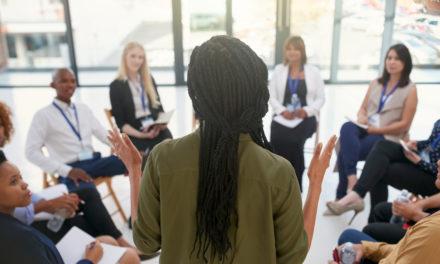
The U.S. has recently been reckoning with some essential and long-overdue conversations around policing, bias, use of force, and police relations to communities of color. One related conversation that isn’t on many people’s radar is the subject of police relations to differently-abled communities. One community that often faces cross-cultural challenges, which can quickly escalate to dangerous situations when police are involved, is the Deaf and hard-of-hearing community. One community that often faces cross-cultural challenges, which can quickly escalate to dangerous situations when police are involved, is the Deaf and hard-of-hearing community. Share on X
Each year, an unknown number of Deaf or hard-of-hearing individuals are subjected to police violence or killed by police due to cultural misunderstandings. Such misunderstandings typically arise when police assume that non-compliance with verbal commands is willful, when individuals are unable to express themselves verbally, or when their speech seems unusual or louder than is typical, and police perceive them as being aggressive. Frequently, as in the high-profile case of a Deaf Latino man killed by police in Oklahoma city in 2017, officers do not realize the individual they are interacting with is Deaf or hard-of-hearing. In other cases, even if officers learn that someone cannot hear them, the Deaf or hard-of-hearing individual is denied requests to communicate via pen and paper or denied their right to an interpreter.
In response to these challenges, various organizations have created “visor cards” for drivers to keep on their visors for easy access if they are pulled over by police; the cards typically explain, “Driver is Deaf,” and include instructions for interacting and communicating effectively. Yet even when drivers possess these cards, police may ignore them.
Recently, several police departments have recognized these problems and attempted to address them. This month the Colorado Springs police department introduced a pocket guide, “Signs of the Law,” that includes tips for communicating with Deaf or hard-of-hearing individuals, and common American Sign Language signs that may be relevant in traffic stops and other interactions. In Garden City, GA, the police department began distributing visor cards, and in Fort Wayne, IN, the League for the Blind and Disabled partnered with local police departments to offer a training seminar alongside the rollout of a visor card.
These efforts represent important first steps toward addressing intercultural communication barriers, and will hopefully raise awareness and inspire policy change in other communities. Yet, in order to be successful, they depend upon officers’ knowledge and compliance. Too often, the onus still falls wrongly on differently abled individuals to convince police of and educate them about their identity and ability. Too often, the onus still falls wrongly on differently abled individuals to convince police of and educate them about their identity and ability. Share on X
We all make assumptions based on our own experiences. I recall a revelation I personally had while taking an American Sign Language class—riding my bike around town, I had always assumed that ringing my bike bell would alert anyone in front of me to my approach so they could make way. Suddenly, with exposure to a different culture that did not share my experiences, I realized that this was an ableist assumption; I subsequently shifted my perspective to curiosity rather than frustration when people did not respond to my bell. It’s only natural to base our conclusions on our experience of the world, but we all have a responsibility to educate ourselves about cultural differences and develop the awareness to respond to these limitations.
In particular, it is the job of police to relate to and communicate with people from many cultures and experiences. Training that supports that ability across different racial and ethnic groups, abilities, and other differences should be standardized, required, and reinforced regularly. It is only through substantial, sustained efforts on these fronts that we will see the change necessary for officers to recognize their assumptions, pause, and consider multiple interpretations of a situation before responding. Prioritizing the development of this skillset across police forces will directly prevent tragedies from continuing to be the all-too-common norm in the course of policing.
To learn more about this issue, see this video from Deaf actress Marlee Matlin, in partnership with the ACLU, developed to inform Deaf and hard-of-hearing people about their rights and how to navigate interactions with law enforcement officers:


















